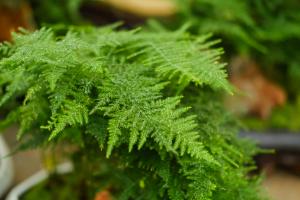What is the Planting Zone for English Laurel Trees?
If you are considering adding English laurel trees to your landscape, it is important to know the appropriate planting zone. This will ensure that your trees thrive and grow to their maximum potential. English laurel trees are known for their showy foliage, fragrant flowers, and ability to withstand various weather conditions. However, planting them outside their recommended zone can result in stunted growth, disease, and even death. In this article, we will explore the planting zone for English laurel trees and provide tips for successful cultivation.
Understanding the Planting Zone Map
The United States Department of Agriculture (USDA) has divided the country into various planting zones based on average annual minimum temperatures. These zones range from 1 (the coldest) to 13 (the warmest) and are further divided into subzones. Planting zones provide gardeners with a general idea of what types of plants will thrive in their area based on temperature ranges.
For English laurel trees, the appropriate planting zone is typically USDA zone 6 through zone 9. This means that the average annual minimum temperature in these zones ranges from -10°F in zone 6 to 30°F in zone 9. Depending on the specific subzone, English laurel trees may also tolerate slightly colder or warmer temperatures.
The Benefits of Planting Within the Recommended Zone
Planting English laurel trees within the recommended USDA zones provides several benefits. Firstly, these trees are better equipped to handle the temperature ranges and climate conditions in their respective zones. This translates to healthy and robust growth, lush foliage, and an abundance of fragrant flowers.
Secondly, planting within the recommended zone reduces the likelihood of disease and pest infestations. English laurel trees that are planted in zones that are too cold or too warm may be more susceptible to insect pests, fungal diseases, and other maladies that can significantly reduce their lifespan.
Tips for Successful Cultivation
Once you have identified the appropriate planting zone, there are a few tips that can help ensure successful cultivation of English laurel trees:
Select a planting site with well-draining soil, as these trees do not tolerate standing water or overly moist soil.
Provide ample sunlight for optimal growth and flower production. English laurel trees prefer partial to full sunlight exposure.
Prune your trees regularly to promote healthy growth, remove dead or diseased branches, and shape the tree as needed.
Fertilize your trees with a balanced fertilizer during their active growing season (typically spring and summer).
Monitor your trees for signs of pest or disease infestations and address them promptly.
In Conclusion
English laurel trees are a popular choice for homeowners looking to add color, fragrance, and texture to their landscapes. However, it is crucial to know the appropriate planting zone to ensure successful cultivation. By planting within the recommended USDA zones, providing adequate care and attention, and monitoring for potential problems, you can enjoy healthy and vibrant English laurel trees for years to come.

 how many times do yo...
how many times do yo... how many planted tre...
how many planted tre... how many pine trees ...
how many pine trees ... how many pecan trees...
how many pecan trees... how many plants comp...
how many plants comp... how many plants can ...
how many plants can ... how many plants and ...
how many plants and ... how many pepper plan...
how many pepper plan...





























